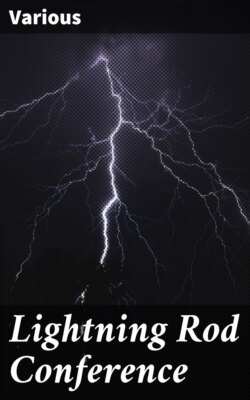Читать книгу Lightning Rod Conference - Various - Страница 21
На сайте Литреса книга снята с продажи.
4. Joints, how made.
ОглавлениеTable of Contents
Some are rivetted, others are screwed, others are coupled by right and left-handed screws. Tubes are socketed into each other. In one case “the end of the conductor is knotted and drawn through a cup-shaped ring of metal.”
There can be no doubt that joints are the greatest source of danger in lightning conductors. If a joint be imperfect, and the conductor be conveying a charge to earth, heat will be generated there, the conductor may be fused and rendered useless, and the discharge will be diverted to the building. Or the joint may be so bad—that is, its resistance may be so great—that it renders the conductor practically useless, for other parts of the building will offer easier paths to the earth. Though the use of solder is pretty general, it is not universal. Indeed, one manufacturer objects to it because “it must interfere with surface conduction!” It certainly should be imperatively used. No joint can possibly be perfect that is not metallically continuous. Careful soldering is the only certain mode of securing this, and that this is practicable is evident from the millions of perfect joints in telegraph wires. To scrape the ends of wire bright, and cover the whole with thin sheet lead, as is done by one firm, is simply to court danger. The absence of joints in wire rope is one great element in its favour.
